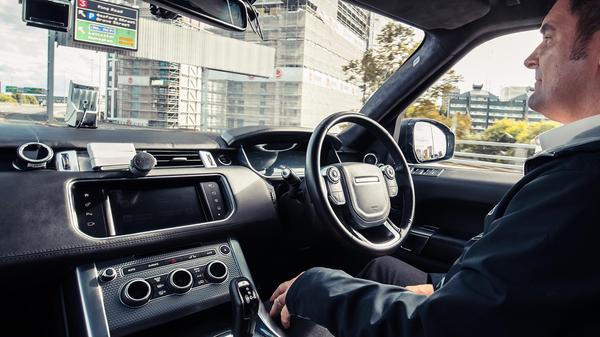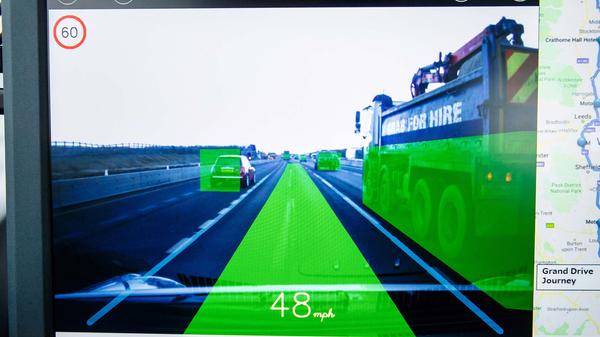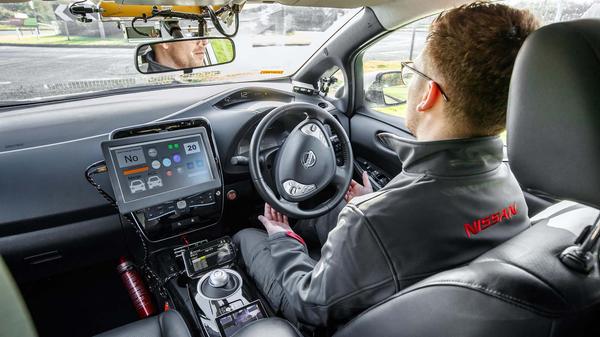News
Highway code changes for self-driving cars
Proposed updates to Highway Code may allow drivers to use streaming services on the move, though phones remain out of bounds


Words by: Dan Trent
Published on 20 April 2022 | 0 min read
As demonstrated by recent revisions to protect vulnerable road users, the Highway Code is constantly evolving to reflect changes in the way we use our streets. And perhaps the biggest innovation for drivers is the increasing prevalence and complexity of Advanced Driver Assistance Systems (ADAS for short) intended to take the strain out of driving. New proposals from the Government aim to make sense of this, including the headline-grabbing claim you’ll soon be allowed to sit back and watch TV while your car drives itself along the motorway.
Great news, seemingly, for Tesla owners in particular, given the brand’s heavy promotion of both self-driving technology and onboard entertainment services like gaming and movie streaming. It’s not just Tesla, of course. Car manufacturers across the board are pushing apparently semi-autonomous driver assistance systems under a variety of suggestive brand names. First seen on premium models from the likes of Audi, BMW and Mercedes, even basic hatchbacks now feature tech like lane-keeping steering tweaks and radar-monitored cruise control to create a potentially confusing situation for drivers. To make sense of it and for more on the terminology and technology read our full guide here.
Great news, seemingly, for Tesla owners in particular, given the brand’s heavy promotion of both self-driving technology and onboard entertainment services like gaming and movie streaming. It’s not just Tesla, of course. Car manufacturers across the board are pushing apparently semi-autonomous driver assistance systems under a variety of suggestive brand names. First seen on premium models from the likes of Audi, BMW and Mercedes, even basic hatchbacks now feature tech like lane-keeping steering tweaks and radar-monitored cruise control to create a potentially confusing situation for drivers. To make sense of it and for more on the terminology and technology read our full guide here.

Building on announcements made last year these new Government proposals attempt to clarify just how much drivers will be able to depend on the technology in the immediate future, while also laying out their continued responsibilities.
In simple terms this could mean a suitably equipped vehicle would be permitted to effectively drive itself using existing technology in strictly defined conditions, such as low-speed motorway traffic. In this context drivers could be permitted to view content not directly related to their driving, such as movies or websites. Handheld phone use would still, however, be outlawed. So, there’s no texting or WhatsApping on the move for now. Drivers would also be expected to be able to take control at short notice, whether that be leaving the motorway at a junction or simply because the car demands it. We’re not quite at the stage where you can nod off while heading up the M1, put it that way.
In simple terms this could mean a suitably equipped vehicle would be permitted to effectively drive itself using existing technology in strictly defined conditions, such as low-speed motorway traffic. In this context drivers could be permitted to view content not directly related to their driving, such as movies or websites. Handheld phone use would still, however, be outlawed. So, there’s no texting or WhatsApping on the move for now. Drivers would also be expected to be able to take control at short notice, whether that be leaving the motorway at a junction or simply because the car demands it. We’re not quite at the stage where you can nod off while heading up the M1, put it that way.

Saying that, if you own a modern car there’s a good chance you’ll already have experienced some level of autonomy, whether that be through automatic brake interventions to ‘nudges’ through the steering wheel to keep you in lane. And it’s getting more sophisticated all the time, some VWs now able to safely bring the car to a halt at the side of the road should the driver become incapacitated. But, chances are, like us you’ll also have experienced plenty of false alarms, where the cameras and sensors get confused and slam on the brakes for parked cars or attempt to steer you out of a lane in roadworks, a topic explored by our own Rory Reid in this video.
The Government proposals offer bold promises for the potential safety benefits, and the economic ones of Britain being a tech hub for companies developing the systems. What is yet to be clarified is exactly which systems will be eligible, what situations you would be permitted to use them and – crucially – who would be liable if something goes wrong. This was brought into focus in 2018 when a self-driving Uber test vehicle ran over and killed a pedestrian in Arizona and the ‘back-up’ driver supposedly monitoring it was found liable. Interestingly enough, they were apparently watching a movie when they should have been paying attention to the vehicle’s surroundings and ready to take over in an emergency… Clearly there’s some way to go yet, and some significant legal issues yet to be resolved. But these proposed changes demonstrate the Government is keen to embrace new technology, and find a way we can use it safely out on the public road.
The Government proposals offer bold promises for the potential safety benefits, and the economic ones of Britain being a tech hub for companies developing the systems. What is yet to be clarified is exactly which systems will be eligible, what situations you would be permitted to use them and – crucially – who would be liable if something goes wrong. This was brought into focus in 2018 when a self-driving Uber test vehicle ran over and killed a pedestrian in Arizona and the ‘back-up’ driver supposedly monitoring it was found liable. Interestingly enough, they were apparently watching a movie when they should have been paying attention to the vehicle’s surroundings and ready to take over in an emergency… Clearly there’s some way to go yet, and some significant legal issues yet to be resolved. But these proposed changes demonstrate the Government is keen to embrace new technology, and find a way we can use it safely out on the public road.
